People in the Lab

Hall Cushman
Hall has diverse interests in many areas of basic and applied ecology. Early in his career, his research focused on the dynamics of insect mutualisms. He then moved on to study the community-level consequences of plant invasions and the impacts of mammalian herbivores on plant communities. In the past decade, Hall has shifted his research focus to climate-change ecology and addresses the dynamics of montane ecosystems, with particular emphasis on patterns in and drivers of forest decline and tree regeneration.
[email protected]
Background
Google Scholar
Hall has diverse interests in many areas of basic and applied ecology. Early in his career, his research focused on the dynamics of insect mutualisms. He then moved on to study the community-level consequences of plant invasions and the impacts of mammalian herbivores on plant communities. In the past decade, Hall has shifted his research focus to climate-change ecology and addresses the dynamics of montane ecosystems, with particular emphasis on patterns in and drivers of forest decline and tree regeneration.
[email protected]
Background
Google Scholar
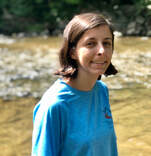
Kierstin Acuna
Kierstin's thesis research is evaluating the long-term consequences of reintroducing a once-extirpated herbivore and disturbance agent – tule elk (Cervus canadensis nannodes) – for native and exotic vegetation in a coastal ecosystem in northern California. Before coming to UNR, Kierstin completed an undergraduate degree in Environmental Science and Policy at the University of Maryland in College Park.
Kierstin's thesis research is evaluating the long-term consequences of reintroducing a once-extirpated herbivore and disturbance agent – tule elk (Cervus canadensis nannodes) – for native and exotic vegetation in a coastal ecosystem in northern California. Before coming to UNR, Kierstin completed an undergraduate degree in Environmental Science and Policy at the University of Maryland in College Park.
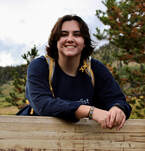
Rachel Lloyd
Rachel is in the early stages of a thesis project that is evaluating the climatic, topographic and forest structure variables that drive the mortality and recruitment of a threatened conifer – whitebark pine (Pinus albicaulis) – in the Lake Tahoe Basin of California and Nevada. Before coming to UNR, Rachel completed an undergraduate degree in Environmental Science at Chatham University in Pittsburgh, Pennsylvania.
Rachel is in the early stages of a thesis project that is evaluating the climatic, topographic and forest structure variables that drive the mortality and recruitment of a threatened conifer – whitebark pine (Pinus albicaulis) – in the Lake Tahoe Basin of California and Nevada. Before coming to UNR, Rachel completed an undergraduate degree in Environmental Science at Chatham University in Pittsburgh, Pennsylvania.
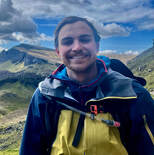
Kadin Woolever
Kadin is in the early stages of a thesis project that is evaluating the climatic, topographic and forest structure variables that drive the mortality and recruitment of a threatened conifer – whitebark pine (Pinus albicaulis) – in the Lake Tahoe Basin of California and Nevada. Before coming to UNR, Kadin completed an undergraduate degree in Environmental & Technology Studies at Carleton College in Northfield, Minnesota.
Kadin is in the early stages of a thesis project that is evaluating the climatic, topographic and forest structure variables that drive the mortality and recruitment of a threatened conifer – whitebark pine (Pinus albicaulis) – in the Lake Tahoe Basin of California and Nevada. Before coming to UNR, Kadin completed an undergraduate degree in Environmental & Technology Studies at Carleton College in Northfield, Minnesota.
Past Postdoctoral Fellows:

Tyler Refsland
2018-21. Tyler studied the effects of multiple stressors on the functioning of forest ecosystems. His research at UNR focused on the spatial-temporal dynamics of aspen mortality in the western U.S. and across North America.
Heather Davis
2006-09. Reproductive ecology and population genetics of rare vernal pool grasses.
2006-09. Reproductive ecology and population genetics of rare vernal pool grasses.
Christopher J. Lortie
2001-02. Ecology of coastal dunes and the influence of mammalian herbivores on plant communities.
2001-02. Ecology of coastal dunes and the influence of mammalian herbivores on plant communities.
Past Graduate Students
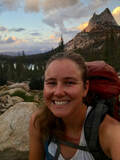
Elizabeth Reikowski (2021)
Liz is interested in understanding how herbivores influence the health and composition of plant
communities. For her master's research she investigated the effects of mammalian herbivores on
recruitment and stand structure of quaking aspen in the western United States.
Liz is interested in understanding how herbivores influence the health and composition of plant
communities. For her master's research she investigated the effects of mammalian herbivores on
recruitment and stand structure of quaking aspen in the western United States.

Jacob Macdonald (2020)
Jacob is interested in understanding factors that drive the distribution and abundance of plant species.
His master's research focused on identifying the environmental variables that predict the growth and
mortality of quaking aspen in the western U.S.
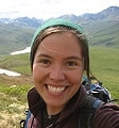
Caprice Lee (2018)
Caprice completed a project that evaluated long-term effects of reintroduced elk on the taxonomic
and functional diversity of plant communities. Prior to graduate school, Caprice worked as a research
technician with Sharon Strauss at UC Davis.
Caprice completed a project that evaluated long-term effects of reintroduced elk on the taxonomic
and functional diversity of plant communities. Prior to graduate school, Caprice worked as a research
technician with Sharon Strauss at UC Davis.
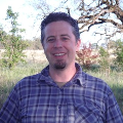
Eric Cecil (2017)
Eric’s project used a long-term exclosure experiment to assess the impact of elk on the
composition of ground-dwelling arthropods.
Eric’s project used a long-term exclosure experiment to assess the impact of elk on the
composition of ground-dwelling arthropods.
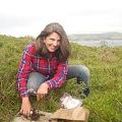
Vanessa Dodge (2017)
Vanessa evaluated the role of soil texture, moisture and herbivore activity in mediating the effects of reintroduced elk on soil characteristics and nutrient availability.
Vanessa evaluated the role of soil texture, moisture and herbivore activity in mediating the effects of reintroduced elk on soil characteristics and nutrient availability.
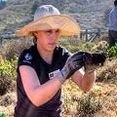
Cody Ender (2016)
Cody addressed the effects of elk on the success of a dominant plant invader, Holcus lanatus.
She now works as a plant ecologist for the National Parks Services at Point Reyes National
Seashore.
Cody addressed the effects of elk on the success of a dominant plant invader, Holcus lanatus.
She now works as a plant ecologist for the National Parks Services at Point Reyes National
Seashore.
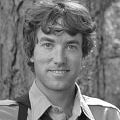
Taylor Ellis (2015)
Taylor's research addressed the hypothesis that elk indirectly affect the abundance of small mammal populations and seed predation rates by altering the vegetation structure of a coastal grassland. Taylor now works for Point Reyes National Seashore as a wildlife biologist, monitoring owl populations at the park.
Taylor's research addressed the hypothesis that elk indirectly affect the abundance of small mammal populations and seed predation rates by altering the vegetation structure of a coastal grassland. Taylor now works for Point Reyes National Seashore as a wildlife biologist, monitoring owl populations at the park.
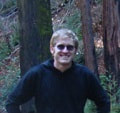
Clark Richter (2015)
Clark examined the impacts of elk herbivory on a range of plant species that differ greatly in their trait characteristics. He is currently in the Ph.D. program in Ecology at UC Davis, working with Marcel Rejmanek on a project that examines the roles of disturbance and plant invasions in forest succession.
Clark examined the impacts of elk herbivory on a range of plant species that differ greatly in their trait characteristics. He is currently in the Ph.D. program in Ecology at UC Davis, working with Marcel Rejmanek on a project that examines the roles of disturbance and plant invasions in forest succession.

Andrew Kleinlesselink (2011)
Andy's research examined the effects of ecosystem engineering shrubs on plant communities in a coastal dune system. He completed a Ph.D. at Utah State University, working with Peter Adler. He is now a postdoc at UCLA working with Nathan Kraft.
Andy's research examined the effects of ecosystem engineering shrubs on plant communities in a coastal dune system. He completed a Ph.D. at Utah State University, working with Peter Adler. He is now a postdoc at UCLA working with Nathan Kraft.

Susan Magnoli (2011)
Susan evaluated the responses of different plant groups to invasion by iceplant in a coastal dune. She is now working on a Ph.D. in plant ecology at Michigan State University with Jennifer Lau.
Susan evaluated the responses of different plant groups to invasion by iceplant in a coastal dune. She is now working on a Ph.D. in plant ecology at Michigan State University with Jennifer Lau.

Laura Saunders (2011)
Laura conducted exclosure experiments that assessed the individual and interactive effects of large and small mammals on oak performance and the woody understory community. Laura is an Environmental Planner with Prunuske Chatham, an environmental consulting company.
Laura conducted exclosure experiments that assessed the individual and interactive effects of large and small mammals on oak performance and the woody understory community. Laura is an Environmental Planner with Prunuske Chatham, an environmental consulting company.
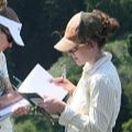
Dawn Graydon (2009)
For her thesis at Sonoma State, Dawn used an exclosure experiment to evaluate the effects of cattle grazing on an endangered lycaenid butterfly and its host plant.
For her thesis at Sonoma State, Dawn used an exclosure experiment to evaluate the effects of cattle grazing on an endangered lycaenid butterfly and its host plant.

Meghan Skaer (2009)
Meghan studied the influence of cattle grazing on native and exotic vegetation in a coastal grassland. She is now completing a Ph.D. in Ecology at UC Davis, working with Kevin Rice. Her research addresses how local patterns of distribution are related to the interaction of an invasive plant with its environment and competitors.
Meghan studied the influence of cattle grazing on native and exotic vegetation in a coastal grassland. She is now completing a Ph.D. in Ecology at UC Davis, working with Kevin Rice. Her research addresses how local patterns of distribution are related to the interaction of an invasive plant with its environment and competitors.
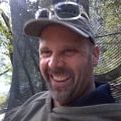
Richard Stabler (2009)
Rich studied the effects of wave-generated disturbances on intertidal plant communities in the Sacramento San Joaquin Delta. He is now a Senior Environmental Specialist with Sonoma County's Permit & Resource Management Department.
Rich studied the effects of wave-generated disturbances on intertidal plant communities in the Sacramento San Joaquin Delta. He is now a Senior Environmental Specialist with Sonoma County's Permit & Resource Management Department.
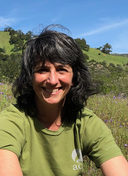
Michelle Cooper (2006)
For her masters research at Sonoma State, Michelle evaluated the role of hikers and mountain bikers in spreading an exotic forest pathogen that causes Sudden Oak Death. She is now the Stewardship Manager with the Audubon Canyon Ranch.
For her masters research at Sonoma State, Michelle evaluated the role of hikers and mountain bikers in spreading an exotic forest pathogen that causes Sudden Oak Death. She is now the Stewardship Manager with the Audubon Canyon Ranch.
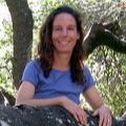
Joan Schwan (2006)
Joan studied the effects of livestock grazing on plant communities in vernal pools. Since completing her degree, she has been working as a vegetation ecologist with Prunuske Chatham, an environmental consulting firm. Her current projects include restoration planning, natural resource assessment and management planning for parklands, and vegetation mapping.
Joan studied the effects of livestock grazing on plant communities in vernal pools. Since completing her degree, she has been working as a vegetation ecologist with Prunuske Chatham, an environmental consulting firm. Her current projects include restoration planning, natural resource assessment and management planning for parklands, and vegetation mapping.

James Coleman (2004)
Jim's thesis at Sonoma State focused on an experimental assessment of different techniques for restoring degraded grasslands in the Central Valley. He serves as the Director of the the WATER Institute and the Visual Documentation Program at the Occidental Arts and Ecology Center.
Jim's thesis at Sonoma State focused on an experimental assessment of different techniques for restoring degraded grasslands in the Central Valley. He serves as the Director of the the WATER Institute and the Visual Documentation Program at the Occidental Arts and Ecology Center.
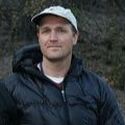
Brent Johnson (2004)
Brent used a large-scale exclosure experiment to evaluate the impacts of reintroduced elk on the composition of a coastal grassland community at Point Reyes National Seashore. 2004. He now serves as Research Coordinator and Lead Botanist for Pinnacles National Park.
Brent used a large-scale exclosure experiment to evaluate the impacts of reintroduced elk on the composition of a coastal grassland community at Point Reyes National Seashore. 2004. He now serves as Research Coordinator and Lead Botanist for Pinnacles National Park.

Denise Cadman (2002)
For her masters thesis, Denise evaluated the effects of accumulating dead plant biomass produced by annual grasses on the species richness and composition of vernal pool communities. She works as an environmental scientist for the City of Santa Rosa and a lecturer at Santa Rosa Junior College.
For her masters thesis, Denise evaluated the effects of accumulating dead plant biomass produced by annual grasses on the species richness and composition of vernal pool communities. She works as an environmental scientist for the City of Santa Rosa and a lecturer at Santa Rosa Junior College.
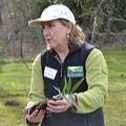
Karen Gaffney (2002)
Karen's masters thesis research focused on two topics in invasion biology: 1) assessing the impacts on an exotic grass, Arundo donax, on riparian plant communities and 2) evaluating the effectiveness of different methods for controlling this invasive grass. Karen is now a Land Stewardship Manager at the Sonoma County Agricultural Preservation and Open Space District.
Karen's masters thesis research focused on two topics in invasion biology: 1) assessing the impacts on an exotic grass, Arundo donax, on riparian plant communities and 2) evaluating the effectiveness of different methods for controlling this invasive grass. Karen is now a Land Stewardship Manager at the Sonoma County Agricultural Preservation and Open Space District.

Trisha Tierney Meisler (2002)
At Sonoma State, Trisha used an exclosure experiment to assess the effects of feral pig disturbances on vegetation and soil characteristics in a California coastal grassland.
At Sonoma State, Trisha used an exclosure experiment to assess the effects of feral pig disturbances on vegetation and soil characteristics in a California coastal grassland.

Katherine Etienne (2001)
At Sonoma State, Katie completed masters research that evaluated the impact of human-caused disturbances on stream insect assemblages.
At Sonoma State, Katie completed masters research that evaluated the impact of human-caused disturbances on stream insect assemblages.
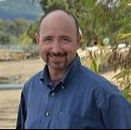
Sean McNeil (2001)
Sean's thesis research focused on the indirect effects of deer herbivory on nitorgen availability in a coastal dune. He currently works as an Environmental Specialist for the City of Santa Rosa. In this role, he writes grants to fund creek restoration projects and conducts rare-plant surveys, wetland delineations and biological assessments.
Sean's thesis research focused on the indirect effects of deer herbivory on nitorgen availability in a coastal dune. He currently works as an Environmental Specialist for the City of Santa Rosa. In this role, he writes grants to fund creek restoration projects and conducts rare-plant surveys, wetland delineations and biological assessments.
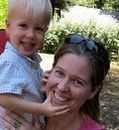
Darça Morgan (2001)
Darca's research focused on evaluating the influence of non-native plant invasions on riparian arthropods.
Darca's research focused on evaluating the influence of non-native plant invasions on riparian arthropods.
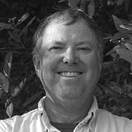
Peter Warner (2000)
At Sonoma State, Peter completed field experiments that evaluated the influence of mammalian herbivores on the growth and survival of a dominant nitrogen-fixing shrub. Since completing his masters degree, he has worked for many years as a botanical and ecological consultant for a range of conservation organizations.
At Sonoma State, Peter completed field experiments that evaluated the influence of mammalian herbivores on the growth and survival of a dominant nitrogen-fixing shrub. Since completing his masters degree, he has worked for many years as a botanical and ecological consultant for a range of conservation organizations.

Maria Alvarez (1999)
Maria's masters research involved a study that examined the effects of an exotic plant invader, cape ivy (Delairea odorata), on the composition of coastal plant communities. For many years, Maria has worked as a plant ecologist in the National Park Service at the Golden Gate National Recreation Area in the Bay Area of northern California.
Maria's masters research involved a study that examined the effects of an exotic plant invader, cape ivy (Delairea odorata), on the composition of coastal plant communities. For many years, Maria has worked as a plant ecologist in the National Park Service at the Golden Gate National Recreation Area in the Bay Area of northern California.

Jeffrey Waller (1998)
Jeff's research focused on the influence of shrubs on herbaceous plant assemblages in a coastal dune ecosystems. He is now Assistant Principal at Robertson High School in Fremont, California.
Jeff's research focused on the influence of shrubs on herbaceous plant assemblages in a coastal dune ecosystems. He is now Assistant Principal at Robertson High School in Fremont, California.

Mark Smith (1997)
At Sonoma State, Mark conducted a field experiment to evaluate the effects of deer and hares on growth of California buckwheat. He is now an Associate Professor in the Department of Biology at Santiago Canyon College in southern California.
At Sonoma State, Mark conducted a field experiment to evaluate the effects of deer and hares on growth of California buckwheat. He is now an Associate Professor in the Department of Biology at Santiago Canyon College in southern California.
Past Research Technicians:
Sarah Gordon
2006-09. Reproductive ecology and population genetics of rare vernal pool grasses.
Morgan Kennedy
2008-09. Long-term study of disease dynamics and forest impacts caused by Phytophthora ramorumin northern California.
Melina Kozanitas
2007. Long-term study of disease dynamics and forest impacts caused by Phytophthora ramorumin northern California.
Heather Torpin
2006. Influence of vertebrates on the spread of Phytophthora ramorum, the pathogen that causes Sudden Oak Death.
Shelly Benson
2004-06. The role of vertebrates and land-use history in affecting the spread of Phytophthora ramorum, the pathogen that causes Sudden Oak Death.
Brian Anaker
2005-06. Factors affecting the distribution and abundance of Phytophthora ramorum, the pathogen that causes Sudden Oak Death.
Rebecca Anderson
2001-03. Effects of soil disturbances by feral pigs on grassland plant communities and ecosystems.
Michael Anthony
2001-02. Impacts of mammalian herbivores on plant community structure and ecosystem dynamics.
Erin Siska
2000-01. Influence of mammalian herbivores on three oak woodlands in northern California.
Jeanie Slagter
2000-01. Effects of soil disturbances by feral pigs on grassland plant communities and ecosystems.
2006-09. Reproductive ecology and population genetics of rare vernal pool grasses.
Morgan Kennedy
2008-09. Long-term study of disease dynamics and forest impacts caused by Phytophthora ramorumin northern California.
Melina Kozanitas
2007. Long-term study of disease dynamics and forest impacts caused by Phytophthora ramorumin northern California.
Heather Torpin
2006. Influence of vertebrates on the spread of Phytophthora ramorum, the pathogen that causes Sudden Oak Death.
Shelly Benson
2004-06. The role of vertebrates and land-use history in affecting the spread of Phytophthora ramorum, the pathogen that causes Sudden Oak Death.
Brian Anaker
2005-06. Factors affecting the distribution and abundance of Phytophthora ramorum, the pathogen that causes Sudden Oak Death.
Rebecca Anderson
2001-03. Effects of soil disturbances by feral pigs on grassland plant communities and ecosystems.
Michael Anthony
2001-02. Impacts of mammalian herbivores on plant community structure and ecosystem dynamics.
Erin Siska
2000-01. Influence of mammalian herbivores on three oak woodlands in northern California.
Jeanie Slagter
2000-01. Effects of soil disturbances by feral pigs on grassland plant communities and ecosystems.